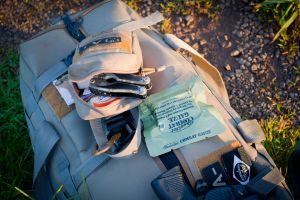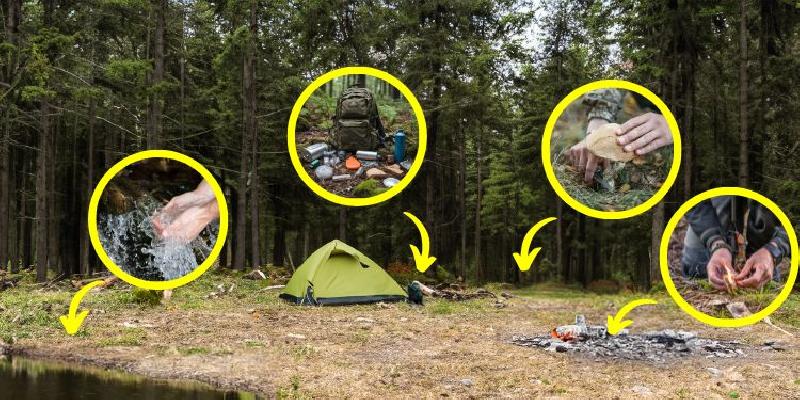I recently read a book that estimates up to 5 billion people could die in the months and years after a global-scale nuclear war.
The terrifying part about this is that the bulk of the deaths will result from hunger, violence, disease, and other forms of deprivation in the months and years following the initial blasts.
And, according to experts (though, who can trust them nowadays, right?), the world is currently closer to a total thermonuclear war than at any time during the past 75 years.
Such a war will lead to societal collapse. No one, nowhere, will cruise through such a catastrophe. Surviving will take a lot of effort.
Unless you are prepared, if SHTF happens, you will die within the first few years at best.
Now, how stupid would you feel if you have been prepping for years, only to succumb due to a few silly mistakes? In this article, I will deal with some of preppers’ most common mistakes.
Fire
Stranded without fire is one of the biggest and most fatal mistakes you can make. Not only does fire create warmth on a cold night, but it also enables us to cook food and have light.
I find fire not only practical but also psychologically soothing, as there are few things as depressing as cold, dark, and silence. Living in the wilderness in a post-SHTF scenario, you will eventually run out of matches, butane lighters, and any and every other convenient way of starting a fire.
Therefore, it is essential that you are not only aware of alternative ways of making fire but can actually employ these ancient techniques to get a nice, cozy fire going.

Starting a fire is about more than striking a spark into tinder. Several other factors come into play, from selecting the right tinder and kindle to having the technique down.
And once you have that precious little ember, what then? Getting a fire going requires some practice.
It can be highly frustrating if you need to start a fire and realize that even though you have all the tools and knowledge, you need more experience.
A few mistakes you could be making when it comes to producing an ember or spark could be:
- Consistent pressure: Whether working with a bow drill or flint and steel, your actions must be smooth and easy. You must be prepared to work up a bit of a sweat, but stay calm. Slow is smooth, and smooth is fast. The more frustrated you become and try to start a fire with brute force, the more likely you are to sleep cold.
Once you have an ember, you need to pay attention to the following:
- Ventilation and gradual fuel addition: As the flame develops, small sticks and twigs are gradually added to the fire to build it up. But, beware, if you are over-hasty, you will smother the fire.
The rule is something like the following. The hotter the coals, the more relaxed and careless you can be with ventilation. But a newbie flame, where little heat has developed in the material around it, needs a lot of air.
A mistake I often see is people getting their new flame into densely packed tinder just to see it die. Give the baby air to breathe.
Over or Under Packing

If you packed your whole house, you overpacked.
If your pack is so light you can barely feel the weight, you under packed.
Now, I am fully aware that there are considerable differences between EDC, go-bags, and wilderness survival packs.
In this instance, I am talking more specifically about wilderness survival packs. You can read more here about the survival items you should never put in your backpack, as well as the essential items that should never be missing from your backpack.
But the principles apply to any situation.
Shelter, Fire, Food, and First Aid should be your priorities—almost always in that order, unless you have a medical emergency, in which case first aid takes precedence.
I have a “full circle” way of thinking about things in my wilderness pack. So, regarding shelter, I have two ropes, a sturdy waterproof tarp, and pegs.
I can conceivably build a shelter almost anywhere. But what if the ground is really hard or very soft. Now, I will need a shovel or a hammer.
The point is that when you tick shelter off the list, you need to have in your possession the minimum number of items you could conceivably need in the widest possible set of circumstances you can think of.
This is where the full-circle concept comes into play. If you cannot complete your mission with what you have in the pack, you might as well have left everything at home.

Carrying weight that will not keep you dry in a storm or protect you against strong wind is useless.
The same applies to first aid. It helps little if you have bandages but nothing to tape them down with, disinfect a wound, or treat pain and infection.
Play the scenario in your mind: You get a nasty cut. You then need to ensure you have everything on hand, from stopping the bleeding initially to treating the wound and possible infection later.
To be fully prepared, check out ‘Home Doctor’—it’s packed with practical medical advice and treatments you can use even in the wilderness. You’ll also find a list of essential items you need when medical help is not available.
Also, remember that survival will almost surely entail protecting yourself against predators, particularly human predators. So, stock up on ammo, old-school traps, and any other analog system that can help you detect intruders.
Wilderness Eating
Carbs versus Protein versus Micro-Nutrients. You need all three. But which one can you absolutely not do without?
I am no dietician, and you are welcome to fact-check me, but this is how I think about a food strategy.
Stock up on vitamin C, as this is the only essential nutrient you cannot get from meat or protein sources like milk, eggs, etc. Everything else you need to stay alive can be found in meat.
Your liver can turn protein into glucose through a process called glucogenesis.
How this translates into wilderness survival is the following.

In the long term, you will need to prioritize your ability to get a reliable source of good protein.
Carbs like potatoes and rice will be a welcome addition, as will nuts and berries.
But trust me when I tell you that growing lentils and peas to supply an adult with around 0.5 to 1 gram per kilo of body weight in protein daily, requires a lot of peas. In fact, there are about 5 grams of protein in 100 grams of peas and 25 grams of protein in 100 grams of meat.
200 grams of beef will equal the same amount of protein as about a kilo of peas. I do not even want to think about the amount of fiber and flatulence that amount of peas will cause.
If you are serious about living a long time in harsh conditions, find out where you can get some rats, pigeons, or whatever other high protein source you can get your hands on.
Neglecting Water Purification Methods
Hydration is one of the keys to survival. There is simply no way around that. While we all think that boiling water is all you need to do, many soluble heavy metals can survive boiling. In fact, boiling can actually concentrate radioactive materials in water.
You need to look at distillation methods if you want safe water in a post-SHTF scenario. Initially, you can use potassium iodide to bind to radioactive particles and then filter it out. But I would get myself a distillation setup if you are serious about staying alive for the long run.
There are many mistakes you could be making. The few mentioned above, are in my opinion, the most prevalent, and also the easiest to rectify.
Whether it’s finding food and water, building a shelter, or staying safe from predators, this guide covers it all. Written by Nicole Apelian, who survived 57 days on Vancouver Island with just her knowledge, this book is packed with essential skills and tips that could be your lifeline in uncertain times.
via askaprepper




